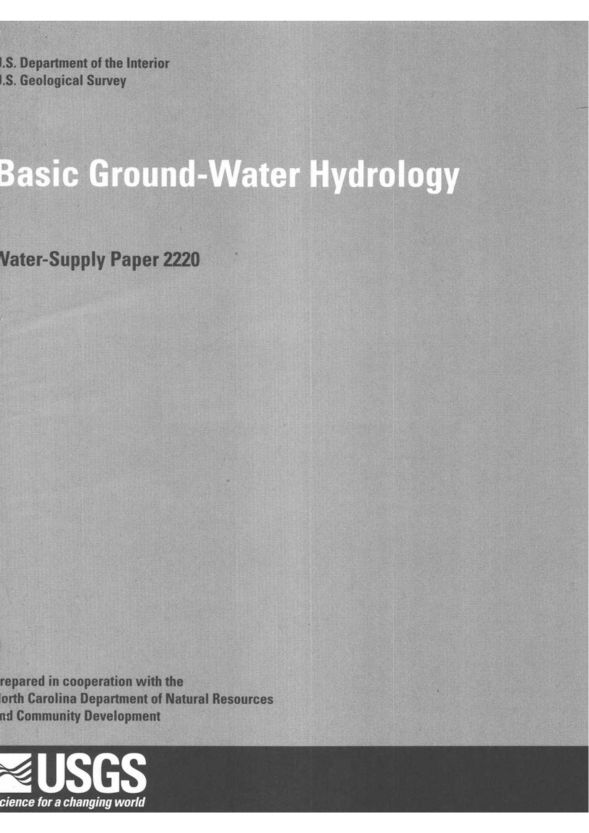Basic Groundwater Hydrology is an educational resource developed by the U.S. Geological Survey. It’s for a wide audience from the rural homeowner to managers of industrial and municipal water supplies to heads of water-regulatory agencies, to become more knowledgeable about the occurrence, development, and protection of groundwater. This report has been prepared to help meet the needs of these groups, as well as the needs of hydrologists, well drillers, and others engaged in the study and development of groundwater supplies. It consists of 45 sections on the basic elements of groundwater hydrology, arranged in order from the most basic aspects of the subject through a discussion of the methods used to determine the yield of aquifers to a discussion of common problems encountered in the operation of ground-water supplies. Each section consists of a brief text and one or more drawings or maps that illustrate the main points covered in the text. Because the text is, in effect, an expanded discussion of the illustrations, most of the illustrations are not captioned. However, where more than one drawing is included in a section, each drawing is assigned a number, given in parentheses, and these numbers are inserted at places in the text where the reader should refer to the drawing. Definitions of ground-water terms are given where the terms are first introduced. Because some of these terms will be new to many readers, abbreviated definitions are also given on the inside front cover for convenient reference by those who wish to review the definitions from time to time as they read the text . Finally, for those who need to review some of the simple mathematical operations that are used in ground-water hydrology, a section on numbers, equations, and conversions is included at the end of the text.
Summary modified from Ralph C. Heath (1983).

